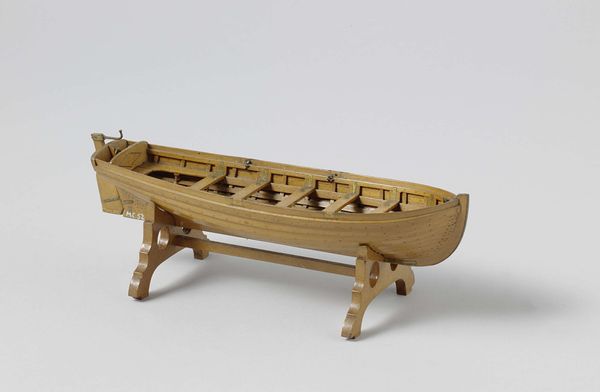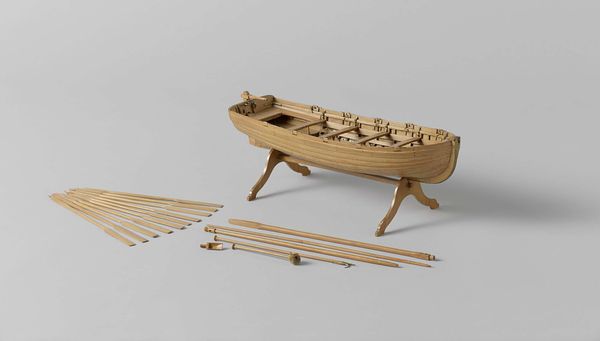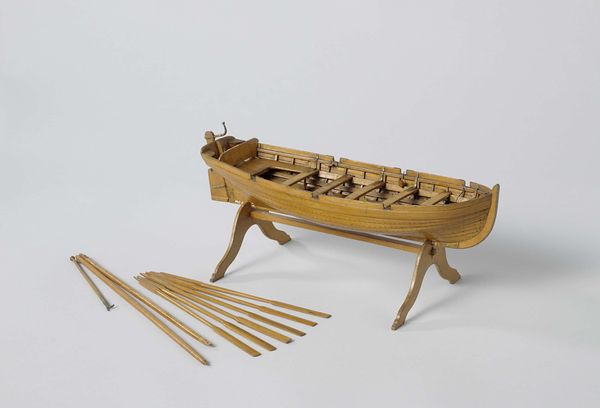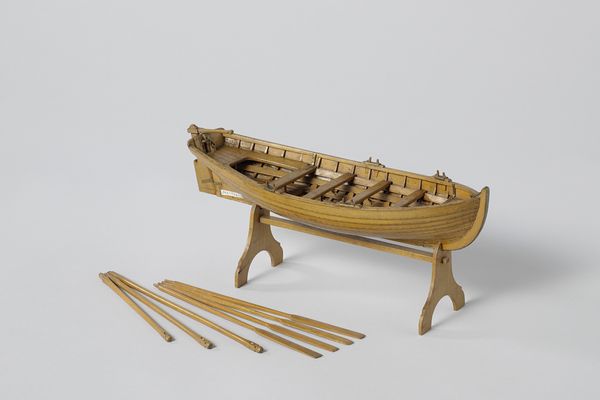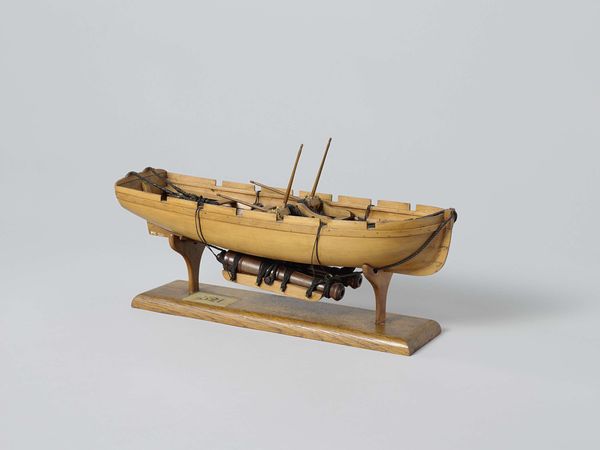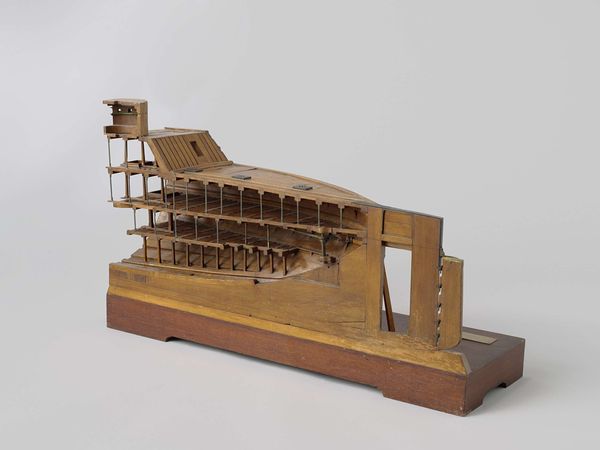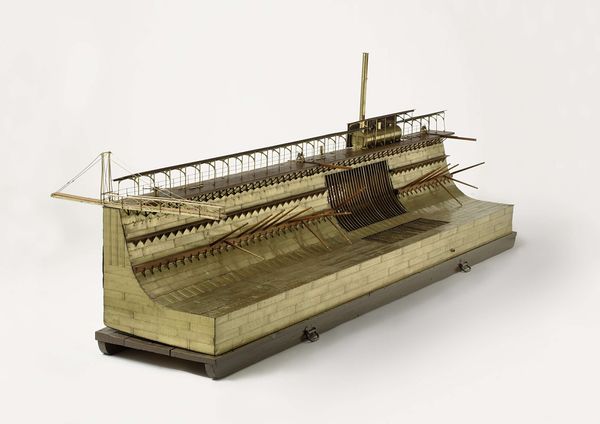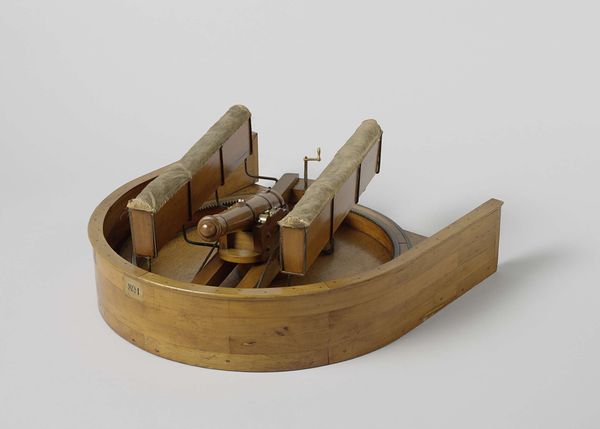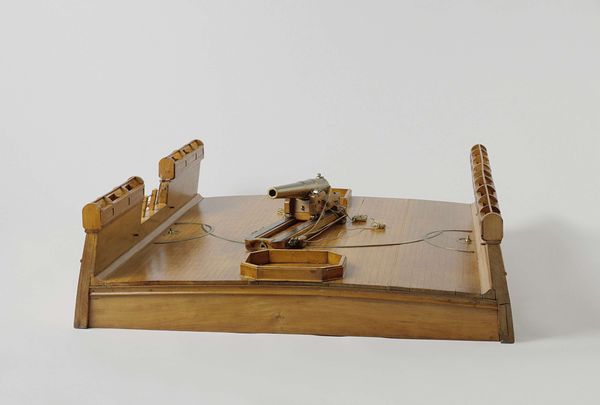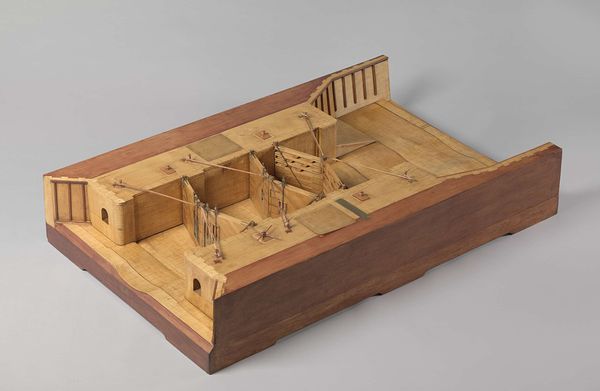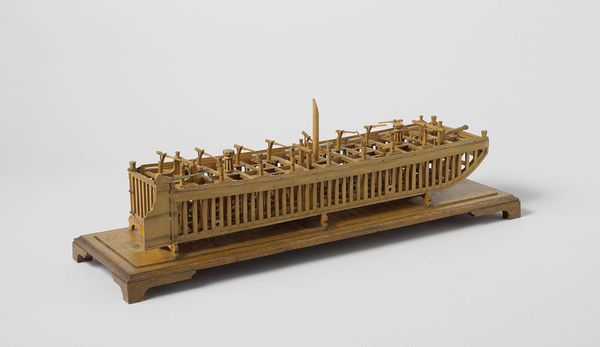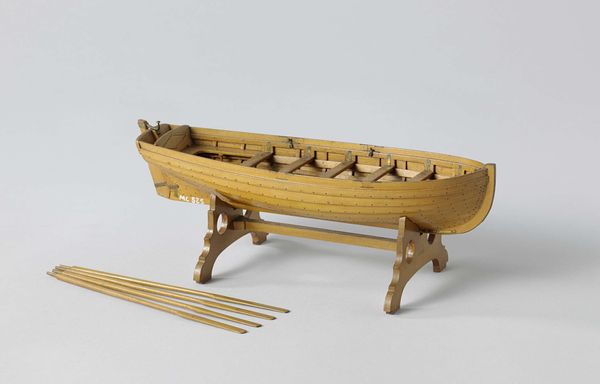
sculpture, wood
#
architectural and planning render
#
architectural modelling rendering
#
architectural diagram
#
architectural plan
#
architecture mock-up
#
sculpture
#
architect
#
architecture model
#
architectural drawing
#
wood
#
architectural proposal
#
prototype of a building
Dimensions: model height 21.5 cm, model width 80.5 cm, model depth 45.5 cm, packaging capsule height 24.5 cm, packaging capsule width 83.5 cm, packaging capsule depth 55.5 cm
Copyright: Rijks Museum: Open Domain
Editor: Here we have a "Model of a Spoon Dredger," believed to date from sometime between 1627 and 1800, made of wood. The intricate detailing is remarkable. It's almost like a puzzle box with all the interlocking platforms and miniature boats. What stands out to you about its construction? Curator: The visual weight is strikingly balanced between the skeletal framework above and the solid hull below. Observe how the repetition of vertical supports creates a rhythmic pattern that leads the eye across the form. What purpose might this repetition serve in the overall composition? Editor: Maybe it's meant to show the complexity and scale of the actual dredging machine, or emphasize its functionality, each part having a role. Curator: Precisely. The horizontal plane of the upper deck, coupled with the extended platforms, establishes a visual dialogue with the curved body of the main vessel, and with what result? Is this contrast intentional? Editor: I think so. It provides a counterpoint, almost as if one emphasizes utility and the other buoyancy, highlighting their individual purposes while also unified. But, if it is art, how is this a sculpture when it represents a functional machine? Curator: Consider sculpture not solely as representational form, but as an exploration of spatial relationships and material properties. The manipulation of wood to evoke engineering principles is, in itself, a sculptural act. Moreover, do not mistake mere utility for beauty. Where can you see the intersection between form and function? Editor: So the artistry lies not just in replicating a machine, but in the design and construction choices...it's the how and why. I appreciate that expanded perspective; I wouldn't have considered that on my own. Curator: Precisely. Now, reflecting on its inherent qualities—its form, materiality, and construction—how would you articulate the 'essence' of this work?
Comments
No comments
Be the first to comment and join the conversation on the ultimate creative platform.
